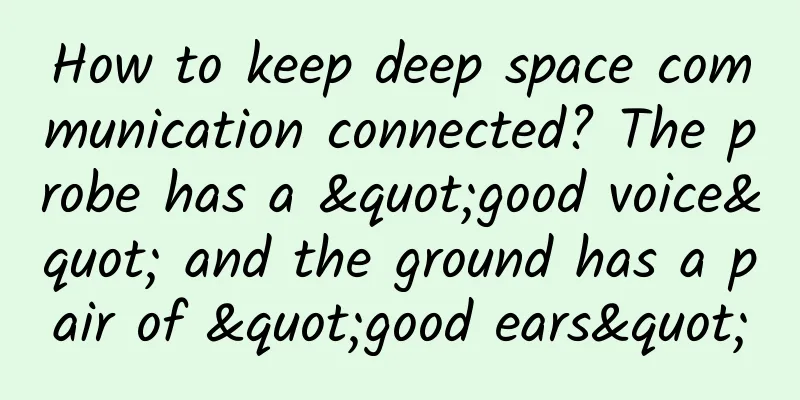"UFO"? Don't be afraid, it's a weather balloon!

|
Maybe one day when you are walking on the road and look up, you see a white ball slowly floating in the sky... Don't be nervous or afraid, this is not an "UFO" but our weather sounding balloon! Sounding balloons, the "doctors" in the sky "Weather sounding balloons" are often mistaken for "unidentified flying objects", but meteorological workers affectionately name them "Dabai" and "brave and fearless high-altitude explorer" is also the highest evaluation of it. In order to detect the temperature, humidity, air pressure, wind direction, wind speed, etc. of the atmosphere, people often conduct high-altitude meteorological observations. High-altitude meteorological observations mainly measure the temperature, humidity, air pressure, wind direction, wind speed at various altitudes of the atmosphere, and there are also some other special items, such as atmospheric composition, ozone, radiation, gas and electricity, etc. So, what are the main means of high-altitude meteorological observation? They mainly include satellite occultation, aircraft-borne, ground-based remote sensing, rocket sounding and balloon sounding, etc., and only balloon sounding can rise to high altitudes to "take the pulse" of the meteorological environment in a direct contact manner, and can be called the "doctor" of high-altitude meteorological detection. The "diagnostic data" obtained by it is usually considered to be relatively accurate and is often used for authenticity verification and calibration verification of atmospheric remote sensing observations. How to use sounding balloons? When working, the ground radar uses real-time tracking of the sounding balloon to realize the wind measurement function. The sounding balloon carries the sonde into the air. As the balloon rises, the ground radar sends out an inquiry signal, and the sonde transponder sends out a reply signal in response. According to the time interval between each pair of inquiry and reply signals and the direction of the signals, the position of the sounding balloon at each moment can be determined, that is, its straight-line distance from the ground radar, azimuth, and elevation. Then, according to the drift of the sounding balloon with the wind, the wind direction and wind speed can be calculated. At the same time, the sonde will continuously send the collected temperature, humidity and air pressure data at different altitudes back to the ground, which will be received by the ground data receiving radar. The received signals will be decoded and transmitted to the computer terminal for display and drawing, thus completing the detection of high-altitude temperature, humidity, air pressure, wind direction and wind speed. Meteorological sounding balloons are an important means of controlling the changing weather conditions at high altitudes. Like a CT scanner, they scan layer by layer from the ground to high altitudes, achieving observations from two-dimensional to three-dimensional, providing rich high-altitude meteorological data for weather forecasts and promoting the improvement of forecast levels. Produced by Guangdong Science and Technology Newspaper Media Center Gatekeeper expert | Guo Zeyong, senior engineer of Yangjiang Meteorological Bureau, Guangdong Province Editor | Tuo Yan |
<<: What do animals do when the weather gets cold? They have some unique ways to survive the winter!
Recommend
First confirmed! There is a source of life outside the Earth! Are there really aliens?
Expert of this article: Yang Chao, PhD in Chemist...
Adobe: Cyber Monday spending to reach $13.3 billion in 2024
Adobe released online shopping data for the 2024 ...
The efficacy and function of stinky oil fruit
As we all know, stinky fruit is a very common med...
The heat wave in the south has cooked all the eggs on the ground, but why does the weather forecast tell me that it will be 37℃ today?
Recently, friends in the north have fully felt th...
The Moon is "Rusting", and the Reason is the Earth?
On March 15, the National Space Administration an...
The efficacy and function of Paulownia root
Many people choose Paulownia root because of its ...
When will astronomical telescopes become “cheap and large”?
Produced by: Science Popularization China Author:...
Thousand sheets, bean curd sheets, vegetarian chicken… How do Chinese people make use of soybeans?
Winter is here, and it's time to eat hot pot....
The efficacy and function of washing face with mugwort leaves
There has always been a tradition in my country t...
A 6-year-old boy was infected with a rare "brain-eating worm" while swimming at the beach! There is currently no specific medicine, and the mortality rate is as high as over 90%!
"My original intention was to take my child ...
The efficacy and function of Sagittaria
Many people are not very clear about the effects ...
The efficacy and function of Chinese libai
With the development of society and the close int...
Aviation, aerospace, astronautics... can you tell them apart? | Expo Daily
Aviation, aerospace, astronautics...can you tell ...
What Chinese medicine cannot be boiled?
When we feel unwell, there are many diseases that...
What are the effects and functions of Jiuxiangchong?
In our daily life, we mainly use the medicinal ma...









